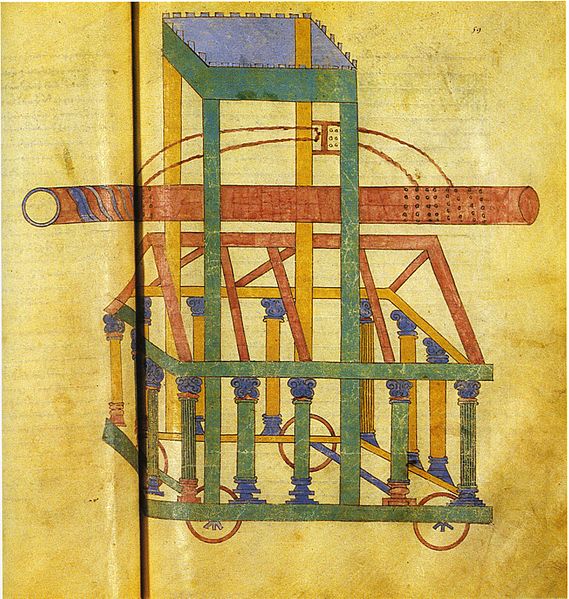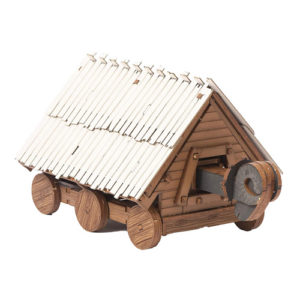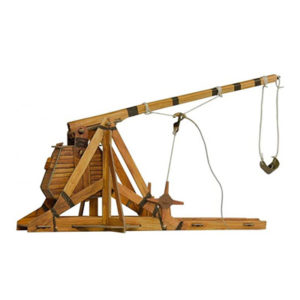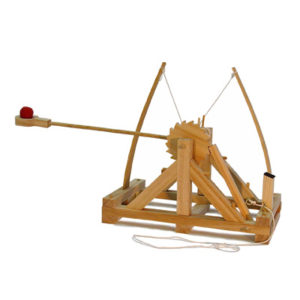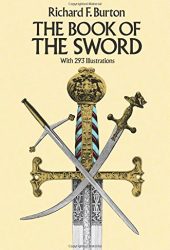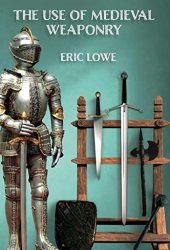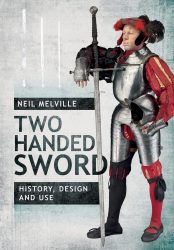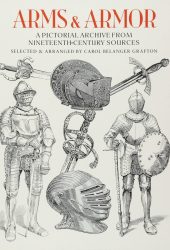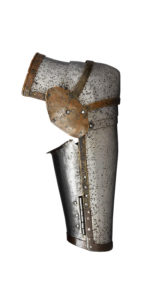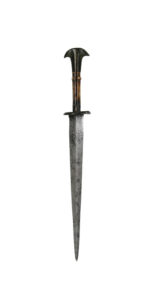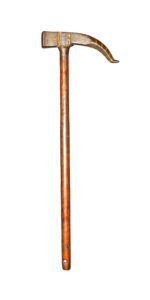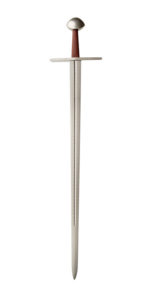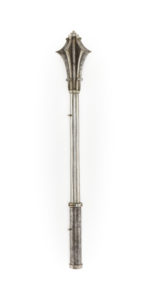The Battering Ram was a medieval siege engine designed to break masonry walls, fortifications, and splinter wooden grates.
A battering ram consisted of a large, heavy log that was carried by several people and propelled with force against an obstacle. With enough momentum, a battering ram could easily damage the target.
Rams were effective weapons of war. Initially logs that were carried by soldiers, battering rams later evolved to include an arrow-proof and fire-resistance encasing and canopy and be mounted on wheels.
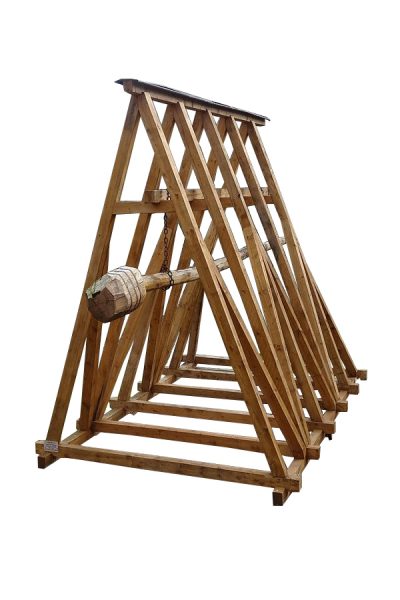
History of the Battering Ram
Early battering rams were smaller and carried directly by soldiers. There are depictions of a possible battering ram from the Egyptian 11th Dynasty, where a pair of soldiers carry a mobile roofed structure and a long pole.
During the iron age, battering rams had a log slung from a wheeled frame of ropes or chains. The ram’s point was usually reinforced with a metal head or cap, while the shaft was bonded with strengthening metal bands. In Carthage, Vitruvius talks about a ram built with a wooden base with wheels and a wooden superstructure. Because this structure was so slow, it was usually referred to as “testudo“, which means tortoise. Another type of ram was one using saplings for support beans. The frame was then covered with hides in order to defend from fire and arrows. Some Assyrian battering rams from the 9th century BC are depicted using a chain to free the ram and wet hides for protection.
It’s believed that battering rams were used by the Persians in the besiege of Plataea, as we as in the Selenius siege in Sicily, c. 408 BC. Battering rams were also used in the destruction of Jerusalem by the Romans, several Crusades’ battles, the Sack of Rome, and the various sieges of Constantinople.
Some medieval rams were slung from ropes and chains. Others were instead supported by rollers. This helped the ram achieve a greater speed before striking the wall or door, increasing its destructive power. It’s said that the famous children’s rhyme Humpty Dumpty is about a battering ram that was possibly used in the siege of Gloucester in 1643.
Defending Against a Battering Ram
Those defending a castle from a battering ram would use different tactics to try to stop their advance. One was to foil the ram by dropping obstacles in front of it, such as large sacks of sawdust. Another was to use grappling hooks to immobilize the ram’s log.
Rams could also be set ablaze, doused in fire-heated sand, and pounded by boulders dropped from battlements. Rapid sallies of troops could also attempt to destroy the ram in a quick attack.
Depictions of Battering Rams

